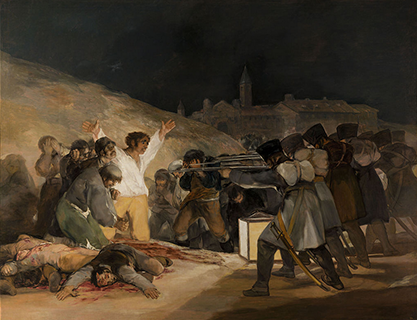
Romanticism was a movement that was at its peak in the second half of the eighteenth century. It went against all logical and rational approaches and ventured into worlds unknown, that were perfect, surreal, and beautiful. There was hardly any room for imperfection, and these characteristics became a part of the romantic movement only in response to the changing nature of the world (such as the changes brought about by the Industrial Revolution). This genre focused on the search for truths that do not exist, to which there are no natural answers. Some more characteristics of romanticism are as follows:
Romanticism deals with a very idealistic view of life. Everything is perfect in a romantic world. Romantic art deals with a metaphorical approach to its work. Nothing is obvious but is vague and one has to delve within its depths to understand its true meaning. Highlighting the beauty in everything and focusing on the little things that make up life are certain aspects of romanticism that make it stand out so vividly. The most famous Romantic artists are Francisco Goya, Theodore Gericault, and Eugène Delacroix.
Francisco Goya (1746-1828) was a Spanish romantic painter and printmaker. Through his works he was both a commentator on and chronicler of his era. The subversive imaginative element in his art, as well as his bold handling of paint, provided a model for the work of artists of later generations, notably Manet, Picasso and Francis Bacon.
Eugène Delacroix (1798-1863) was a French Romantic artist regarded from the outset of his career as the leader of the French Romantic school. Delacroix’s use of expressive brushstrokes and his study of the optical effects of color profoundly shaped the work of the Impressionists, while his passion for the exotic inspired the artists of the Symbolist movement.
Realism (or naturalism) in the arts is the attempt to represent subject matter truthfully, without artificiality and avoiding artistic conventions, implausible, exotic and supernatural elements. Realistic art movement in painting began in France in the 1850s, after the 1848 Revolution as a reaction to Romanticism and historical painting. In favor of depictions of ‘real’ life, the Realist painters used common laborers, and ordinary people in ordinary surroundings engaged in real activities as subjects for their works. The most influential realist painters are Gustave Courbet, Jean-François Millet, and Ilya Repin.

Realism has been prevalent in the arts at many periods, and is in large part a matter of technique and training, and the avoidance of stylization. In the visual arts, illusionistic realism is the accurate depiction of lifeforms, perspective, and the details of light and color. Realist works of art may emphasize the ugly or sordid, such as works of social realism, regionalism, or Kitchen sink realism.
Realism followed the romantic movement and was at its peak in the later half of the eighteenth and early years of the nineteenth century. As the name suggests, realism dealt with reality; it presented the real truth of life without adding any color to it. Realism was a direct response to the romantic movement and was exactly the opposite of all that the movement stood for. Some more characteristics of this genre are as follows:
Realism picks up situations from real life to form its basis in any area, especially in art and literature. No events that occurred in this kind of work were out of the ordinary, and the language used was simple, not glorified. The concept of the work is obvious, and not metaphorical. Everything is evident by its very nature. Realism highlights the reality of life and does not use any embellishments to cover up what might be perceived as ugly or gory.
The Barbizon School of painters were part of an art movement towards Realism in art, which arose in the context of the dominant Romantic Movement of the time. The Barbizon school was active roughly from 1830 through 1870. It takes its name from the village of Barbizon, France, near the Forest of Fontainebleau, where many of the artists gathered. Some of the most prominent features of this school are its tonal qualities, color, loose brushwork, and softness of form. Painters in other countries were also influenced by this art. Beginning in the late nineteenth century, many artists came to Paris from Austria-Hungary to study the new movements.
The leaders of the Barbizon school were Théodore Rousseau, Jean-François Millet, and Charles-François Daubigny. Millet extended the idea from landscape to figures — peasant figures, scenes of peasant life, and work in the fields. In The Gleaners (1857), for example, Millet portrays three peasant women working at the harvest. Gleaners are poor people who are permitted to gather the remains after the owners of the field complete the main harvest. The owners (portrayed as wealthy) and their laborers are seen in the back of the painting. Millet shifted the focus and the subject matter from the rich and prominent to those at the bottom of the social ladders. To emphasize their anonymity and marginalized position, he hid their faces. The women’s bowed bodies represent their everyday hard work.
19th Century Art Movements:
- Neoclassicism
- Romanticism
- Realism
- Impressionism
- Post-Imporessionism
Source images and text: Wikipedia
